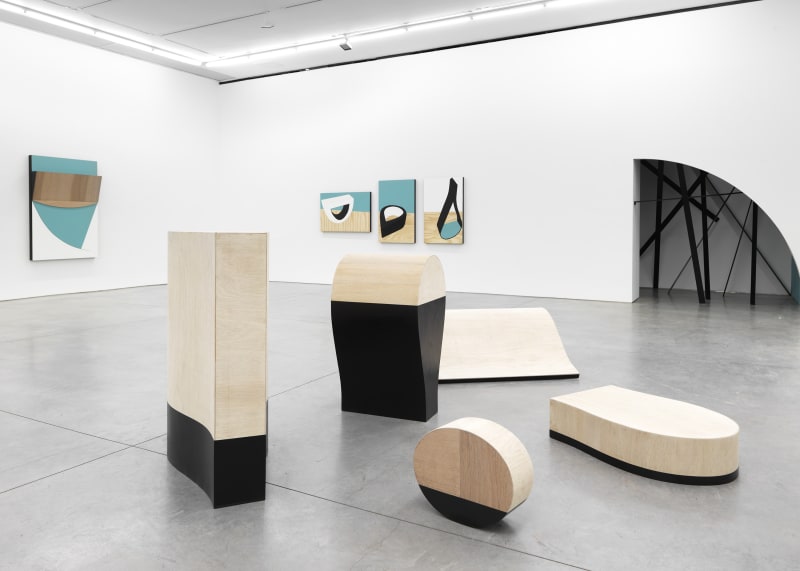BY JOSHUA MACK
Over the course of his career, the Johannesburg-based artist Serge Alain Nitegeka has articulated an increasingly, and impressively, mature take on the fraught meanings of black as a social and formal force. Much of this exploration is inflected by references to the Middle Passage and the artist’s history as a refugee from ethnic violence in both Burundi and Rwanda. It is most obviously expressed in his early self-portraits drawn in charcoal on wooden packing crates and in the obstacle-course-like installations of overlapping black planks through which visitors can thread, and to an extent it carries over into his geometric compositions on wood that seem to riff on modernist precedents such as Piet Mondrian and Kazimir Malevich, which have an architectonic quality and are often crisscrossed by black lines that recall massed two-by-fours.
There is much of the above in this exhibition. A long corridor filled with overlapping boards links the two gallery spaces in which the show is installed. Coloured planes painted directly on the wall are surrounded by painted two-by-fours. Five forms that resemble attenuated exclamation marks, titled Personal Effects II (all works 2017), sit and lie on the floor and might suggest hastily abandoned baggage.
But where the hallway has a carnivalesque feel, the minimal quality of the sculptures eschews easy interpretation. Several paintings in which similar forms are rendered in blues, blacks and whites on bare plywood, as if the sculptures had been excerpted and flattened, hang nearby. These establish dynamic formal and visual relationships within and between two- and three-dimensional space. Rooted in the visitor’s perception, these effects are far subtler than the sensation gained by traversing the corridor. This nonphysicality suggests that the titular personal effects Nitegeka are not object-based but experiential and abstract. Moreover, despite the show’s title, black does not predominate. Rather, Nitegeka uses it to divide or cross the coloured planes in his paintings, giving diagrammatic and architectonic energy to what otherwise might seem like flat geometric compositions in a way that complements the interaction between painting and sculpture.
Black functions as an accent, an absence of colour that gives colour form. On a metaphorical level Nitegeka seems interested in an understanding of nothingness as an opposite that defines and impinges on the something that we each are. In the show’s press release he’s quoted discussing the ‘heaviness of the unknown’. ‘At the end of the day,’ he writes, ‘while we close our eyes asleep in the black, the heaviness catches up. No one is spared. Black is ever constant.’ That’s not quite what comes across from the perceptual effect of this work, but Nitegeka does provoke a visual sensation that pushes towards the poetic.


